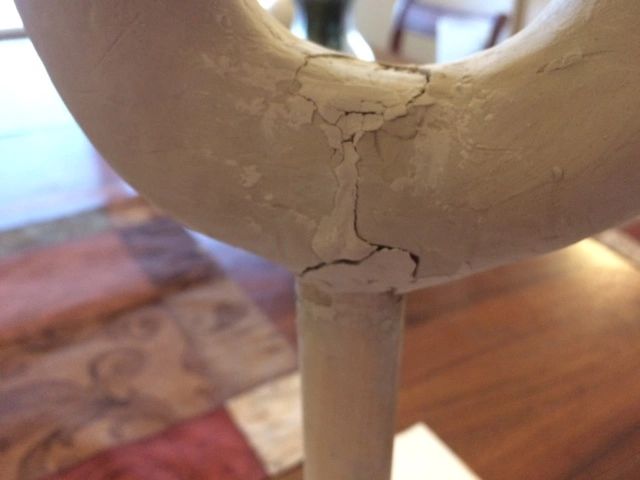How Do I Know Which K-Type Thermocouple I Have?
A thermocouple is a sensor consisting of two dissimilar metal wires joined together at one end to form a junction. This junction produces a small voltage that correlates to the temperature at the junction tip. There are various standard thermocouple types, classified by the combination of metals used. The most common are Types J, K, T, E, R, S and N.
Type K is the most common general purpose thermocouple. It uses Nickel-Chromium alloy and Nickel-Aluminum alloy wires. Type K offers the widest temperature range (-270 to 2320°F or -170 to 1275°C) and is suitable for most applications below 1800°F (1000°C). It provides stable and reliable temperature measurement at an affordable cost.
This article focuses on identifying Type K thermocouples in particular, examining their physical properties and testing methods.
What is a K-Type Thermocouple?
A K-type thermocouple is composed of two different metals – chromel (nickel-chromium alloy) and alumel (nickel-aluminum alloy). The junction between these two metals produces a small voltage that changes with temperature, allowing temperature measurement over a wide range.
K-type thermocouples have a temperature range of -270°C to 1260°C (-454°F to 2300°F) making them suitable for a variety of applications including food processing, chemical manufacturing, and HVAC systems [1]. The most common diameters for K-type thermocouples are .254 mm (0.01 in) and 1.59 mm (0.0625 in).
Some key attributes of K-type thermocouples are [2]:
- Wide temperature range
- Low cost
- Available in a variety of sheath and insulation materials
- Compatible with many devices and instruments
Physical Appearance
The most recognizable feature of a K-type thermocouple is the color of its wire insulation. Standard K-type thermocouples have one red insulated wire and one yellow insulated wire (Source). This color-coding helps identify the type of thermocouple at a glance. The red wire is generally connected to the negative terminal, while the yellow wire connects to the positive terminal.
The standard wire diameter for K-type thermocouples is 20 gauge (0.81 mm diameter) or 24 gauge (0.51 mm diameter), with the 20 gauge being more heavy duty. The outer sheath insulation is usually fiberglass, PTFE, or PVC depending on the application and temperature range. The diameter of the probe tip and stem will also vary based on the specific thermocouple model and application.
Wiring and Connectors
K-type thermocouples consist of two wires – one yellow and one red. The yellow wire is made of chromel alloy and the red wire is made of alumel alloy. The polarity of these wires is important – the yellow wire is always positive while the red wire is negative. Reversing the polarity will result in incorrect temperature readings.
Some common connector types used with K-type thermocouples include:
- Mini plugs – Used in tight spaces, these have a yellow plastic body and locking clip. The wires exit perpendicular to the connector body.
- Jack plugs – Larger and more durable than mini plugs, these have a yellow plastic body and silver pin contacts. The wires exit inline with the connector body.
- Ring terminals – Allow for screw terminal connections, with a red and yellow ring terminal crimped onto the wires.
- Spade terminals – Similar to ring terminals, but with spade shaped ends instead of rings.
The specific connector type used depends on the application and thermocouple meter connections. Proper polarity matching between thermocouple wires and connector contacts is critical for accurate temperature measurement.
Source: https://www.meter-depot.com/k-type-connectors/
Voltage Output
K-type thermocouples have a distinct voltage output curve based on temperature. The output voltage is generated by the Seebeck effect, which produces a voltage when two dissimilar metals are joined at different temperatures.
For K-type thermocouples, the two metals are nickel-chromium (Chromel) and nickel-aluminum (Alumel). The output voltage increases non-linearly as the temperature increases. According to Omega Engineering, the typical output voltage range for K-type thermocouples is approximately -5.891 mV at -200°C to 54.886 mV at 1300°C.
The voltage output for K-type thermocouples can be represented by tables or charts, showing the relationship between temperature and output voltage. Compared to other common thermocouple types like J and T, K-type has a wider temperature range and higher output voltage for a given temperature.
For example, at 500°C, a K-type thermocouple produces around 20 mV while a J-type produces around 15 mV. The higher output voltage makes K-type well-suited for low voltage measurement applications.
Product Labeling
There are a few key pieces of information to look for on the packaging and labeling of a K-type thermocouple that can help identify the specific model or specifications:
The model number or product code is one of the best ways to identify the exact thermocouple model. K-type thermocouples follow a standard model number format consisting of the letters “K” or “KT” followed by a string of numbers and letters indicating specific attributes like probe diameter, length, tolerance, etc.
Another indicator is the temperature range printed on the label or packaging. Most standard K-type thermocouples have a range of -200 to 1300°C (-328 to 2372°F). Special limits or extended ranges can help narrow down the model.
Packaging may also show the probe dimensions or wire gauge, which provide clues about the thermocouple design. Additionally, higher accuracy probes will be specified with the tolerance, such as ±2.2°C for a standard probe.
Finally, the label usually indicates the connector type – whether it has stripped wire ends, a mini-connector, or certain termination. This wiring and connector style is key to identifying the thermocouple model and compatibility.
Testing Methods
There are a couple ways to test and verify the type of thermocouple you have:
Using a Multimeter
One of the easiest ways is to use a digital multimeter to check the voltage output. Connect the thermocouple to the multimeter and apply a heat source to the thermocouple junction. A K-type thermocouple will output approximately 41 microvolts (μV) per degree Celsius. So at room temperature around 25°C it would output around 1 mV.
Checking Against Spec Sheet
Another way is to check the thermocouple against any specification sheet that came with it from the manufacturer. The type of thermocouple is usually clearly listed. You can also search online for the part number printed on the thermocouple leads to find the official spec sheet.
Common Confusions
K-type thermocouples are commonly confused with J-type thermocouples since they share some similarities. Both are nickel-alloy thermocouples with iron as the positive conductor. However, the negative conductor differs – K-type uses chromel while J-type uses constantan. This gives them slightly different properties and temperature ranges.
One of the biggest areas of confusion comes from mislabeling. Since K and J-types look nearly identical, it is easy for manufacturers to accidentally swap labels. Always double check wiring codes and calibration reports to ensure you have the proper type. Misidentified thermocouples can lead to large measurement errors. For example, if you install a J-type that is wrongly labeled as K-type, you could see errors upwards of 54°F at 700°F.
Proper labeling and insulation colors per standards like ANSI and IEC 60584-1/2 help avoid issues. Similarly, sourcing thermocouples from reputable manufacturers with rigorous QA and traceability ensures you get exactly the thermocouple specified.https://www.thermocoupleinfo.com/thermocouple-identification.htm
Application Considerations
When selecting a K-type thermocouple for an application, two key factors to consider are temperature/environment compatibility and whether you need a grounded or ungrounded thermocouple:
K-type thermocouples have a recommended continuous use temperature range of -270 to 1260°C (-454 to 2300°F). However, they can withstand temperatures up to 1372°C (2502°F) for brief periods of time. It’s important to ensure the thermocouple you select is rated for the temperature range needed for your specific application (see sbaa274).
Grounded (grounded junction) vs ungrounded (ungrounded junction) refers to whether the thermocouple wires are physically connected (grounded) or disconnected (ungrounded) at the tip. Grounded types provide faster response times and are less prone to noise interference but are more fragile. Ungrounded types are more durable but respond more slowly. Consider which is more important for your use case (see tempsens.com).
Conclusion
To summarize the main methods for identifying K-type thermocouples:
- Check the thermocouple wires – K-type uses yellow (+) and red (-) insulation
- Verify the mini-connector matches standard K-type designs
- Confirm the voltage output matches the K-type curve
- Look for K, K-type, or Chromel-Alumel markings on the product label
- Perform a polarity test to determine if it follows K-type standards
Properly identifying K-type thermocouples is critical for selecting the right replacement part and ensuring accurate temperature measurements. Double checking the wire colors, connector type, voltage values, product labeling, and polarity against known K-type specifications gives the highest degree of certainty. Don’t rely on just one method alone – verifying through multiple identification techniques helps avoid mistakes and wasted time debugging issues.




